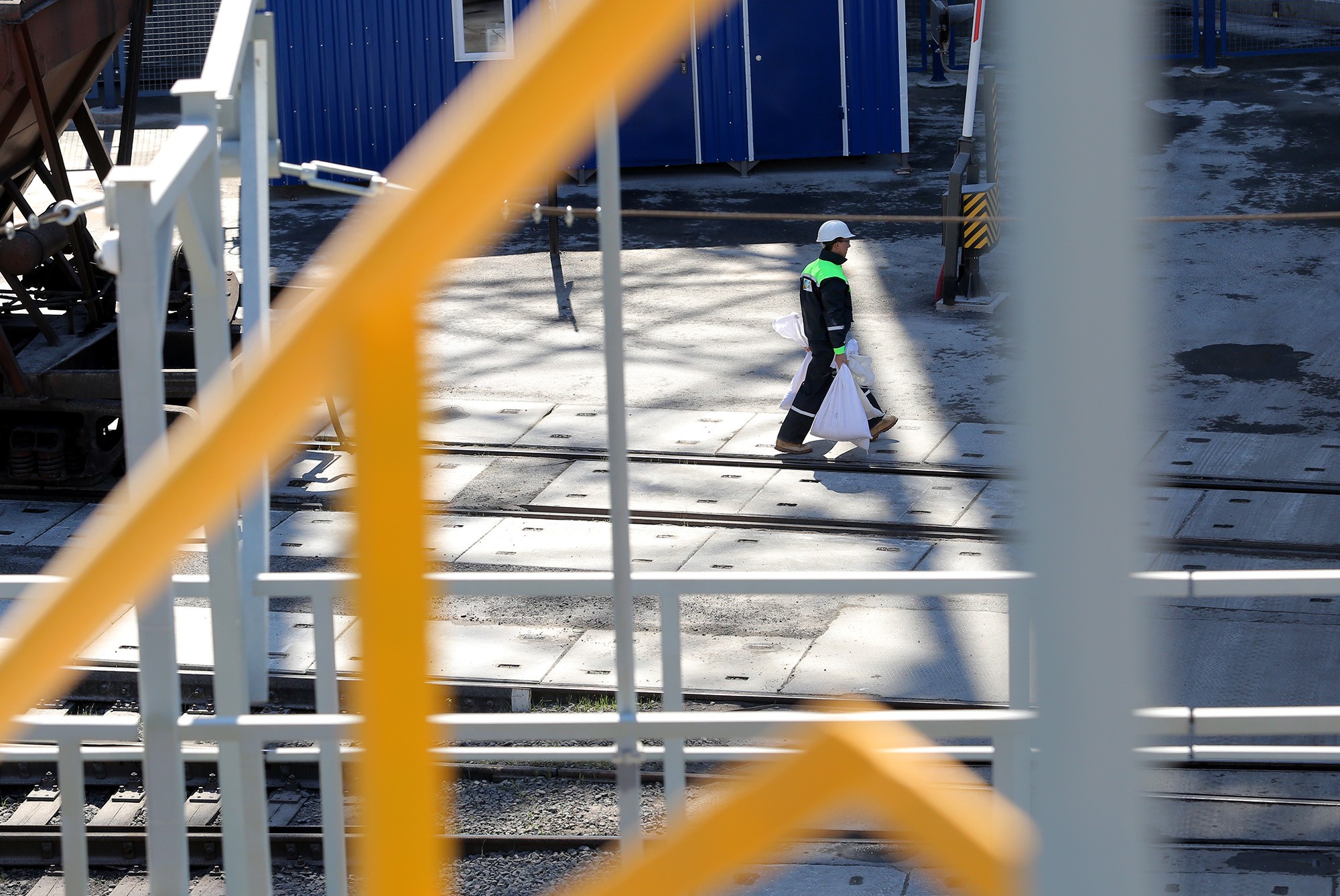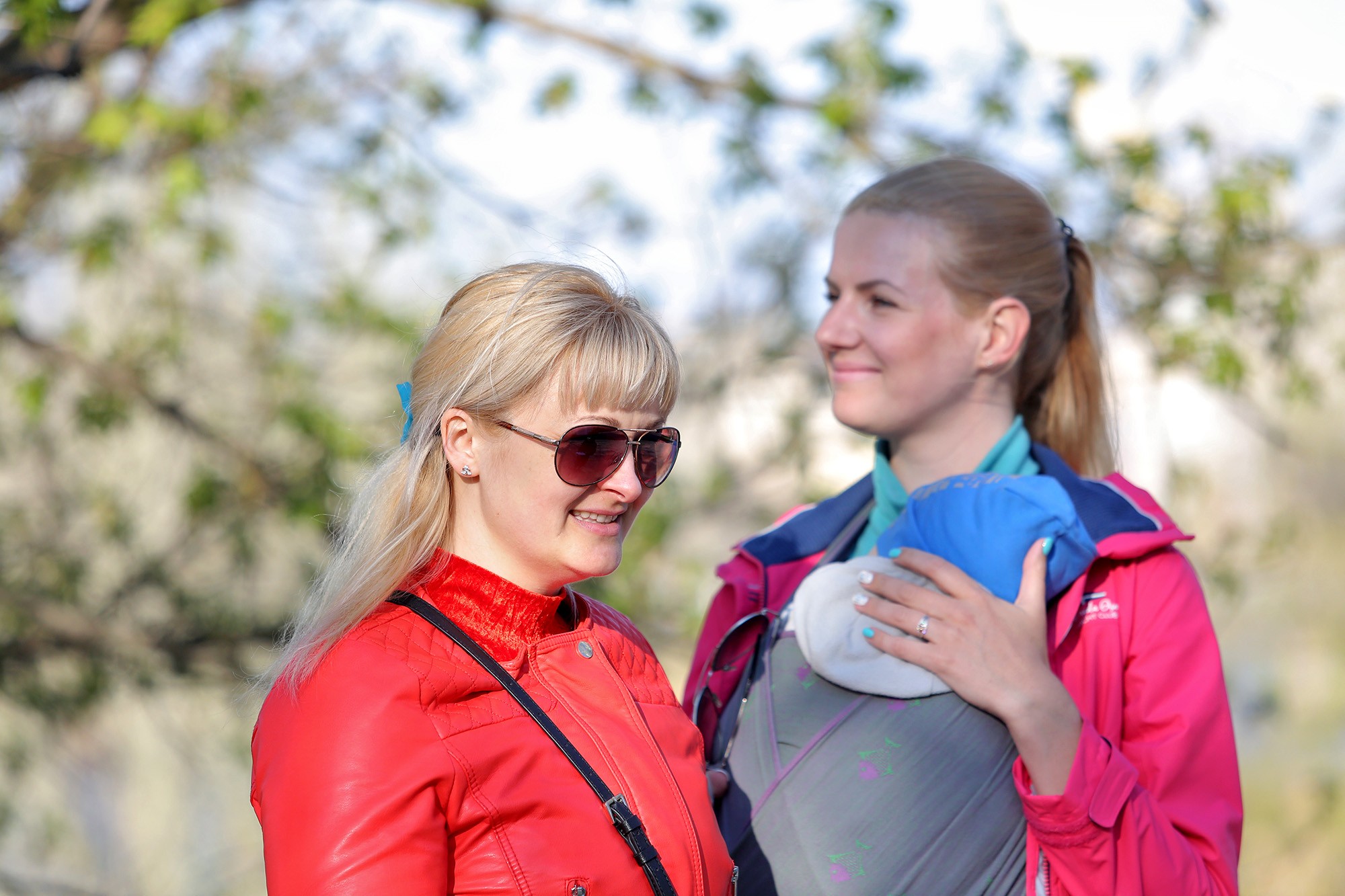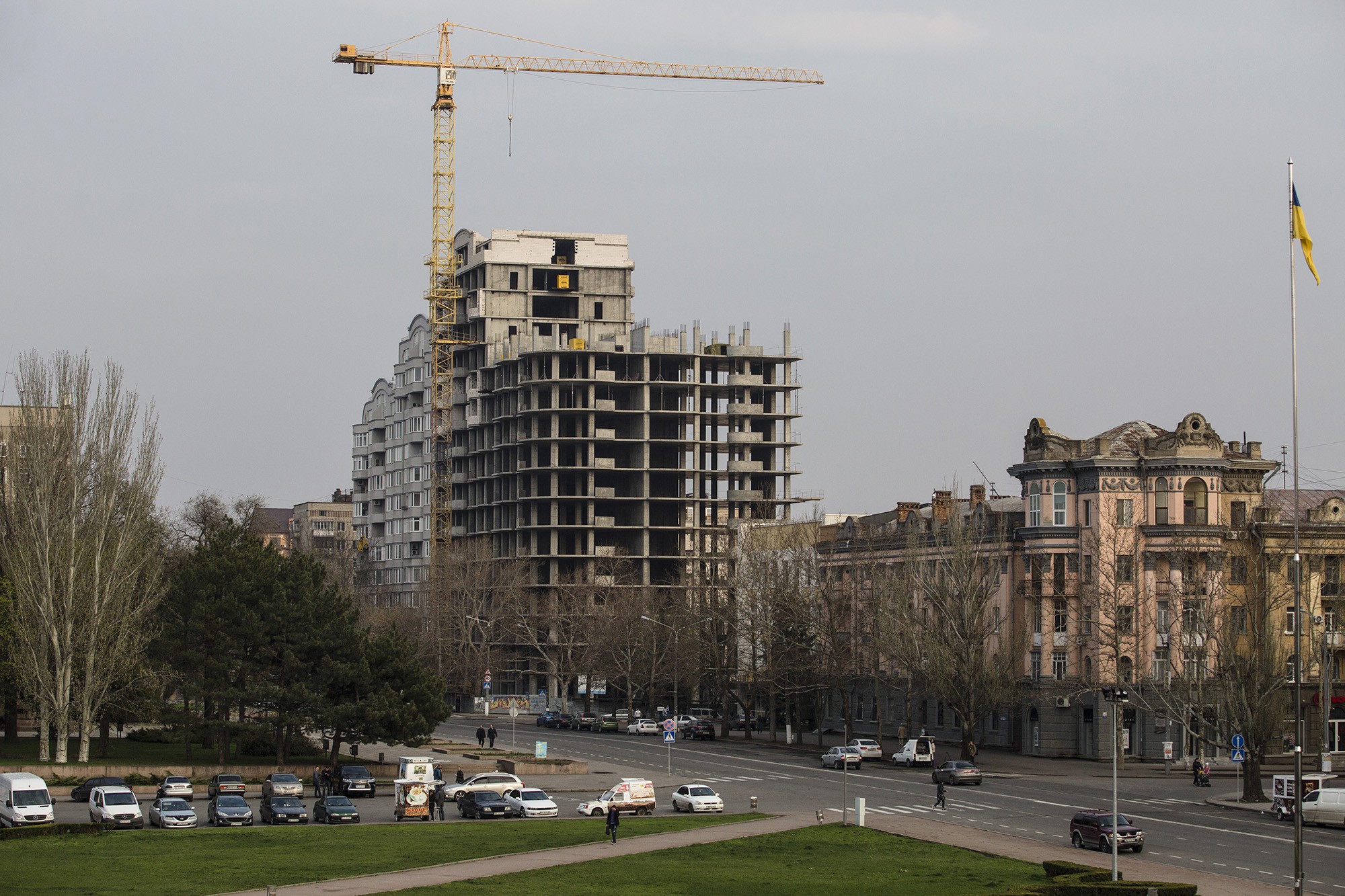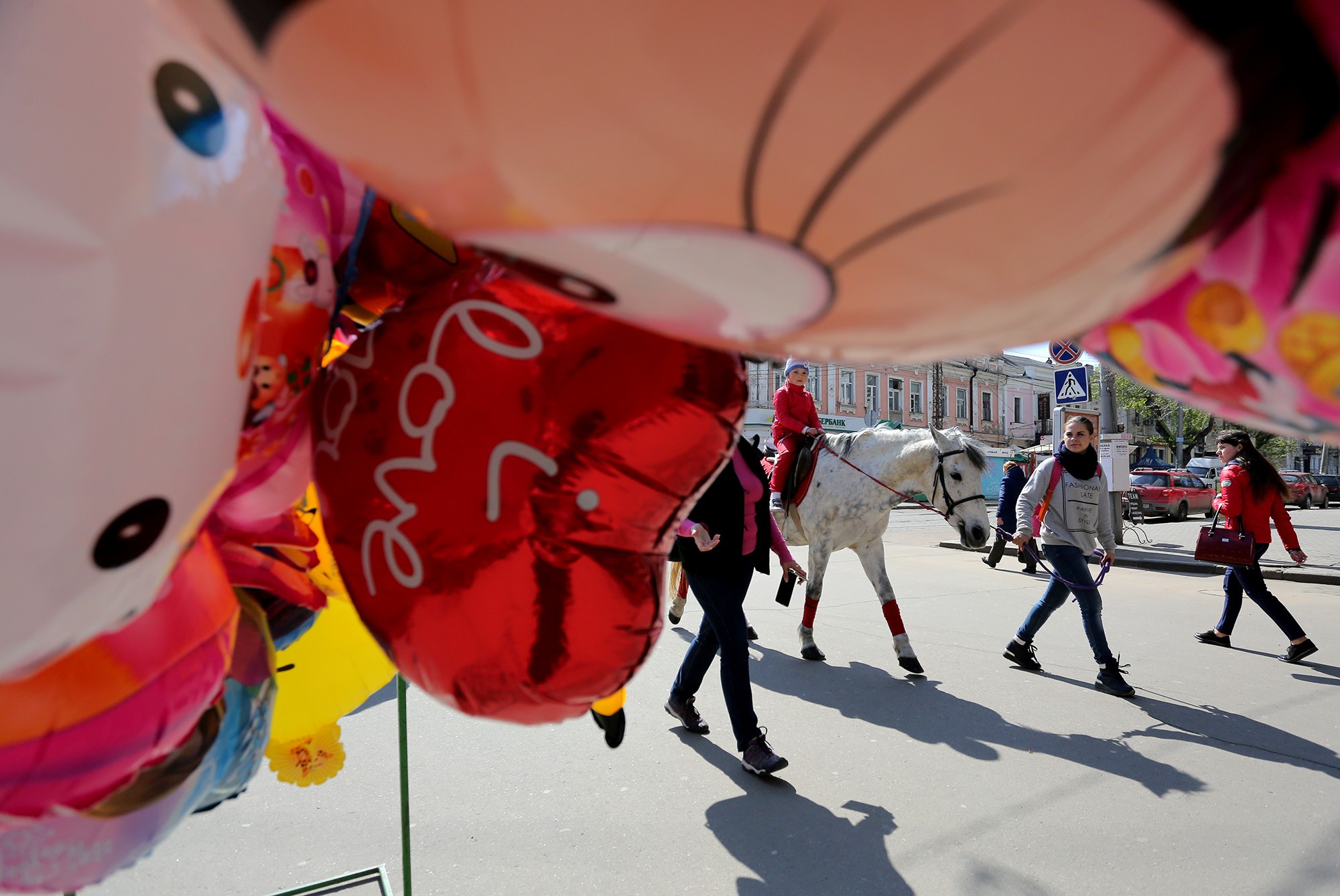MYKOLAIV, Ukraine — Even Mykolaiv’s streets reflect the city’s founding purpose as a shipbuilding center: They are wide and straight, so that lumber could be transported easily.
Founded in 1789 and named after the 4th-century Saint Nicholas, Mykolaiv served for more than two centuries as a major shipbuilding center on the Black Sea.
But after its three prominent shipyards almost completely went out of business some 15 years ago, the city sank into stagnation. Stories about Mykolaiv’s poverty and crime made headlines in the national media.
Now the local authorities and business planners claim Mykolaiv is on the verge of a revival, thanks to the remnants of its shipbuilding legacy — large ports, an educated population, and highly developed infrastructure.
They are trying to lure the big money to make this happen.
“This is the ideal time to invest here,” said Roman Khanzhyn, a project coordinator at Mykolaiv Development Agency, a non-profit municipal institution created by Mykolaiv city council and supported by Western donors.
Khanzhyn says that the four ports of Mykolaiv, located on the Inhul and the Southern Buh rivers, are the major attractions for investors. About 70 percent of Ukraine’s grain exports now goes through them.
In 2016, Mykolaiv attracted $320 million in investment. U.S. agricultural giant Bunge and Chinese firm COFCO Agri have opened grain and oil-handling terminals in Mykolaiv’s ports worth $250 million.
Ports
In a busy Mykolaiv port, Andrii Dmytrenko, the director of the Ukrainian Builder construction company, or Ukrbud for short, proudly shows off the huge and shiny grain terminal used by COFCO, which was constructed by his firm.
“There used to be a landfill of construction waste here,” he said. His firm also constructed the oil and grain transshipping terminal for Bunge.

Andrii Dmytrenko, the director of the Ukrainian Builder construction company, or Ukrbud for short, speaks to Kyiv Post at the sea port of Mykolaiv. (Anastasia Vlasova)
Both projects took several years of planning and construction work, with about 1,000 people working simultaneously on each construction site.
But although President Petro Poroshenko visited the opening of Bunge terminal in June, the companies had to halt other new construction projects for this year and next. Investors are under pressure from the port authorities and constant checks by prosecutors, Dmytrenko said.
Oleksiy Vadatursky, the CEO of Nibulon, one of Ukraine’s largest grain production and exporting companies, said that law enforcement agencies are continuing to put pressure on business, despite the EuroMaidan Revolution that drove the corrupt President Viktor Yanukovych from power in 2014.
“With every change in the regional prosecutor and the law enforcement bodies, (they) start checking how a company became successful,” he said. “Then they start an investigation into the company.”
Vadatursky added that although Mykolaiv ports provide investment opportunities, the fees the ports charge are among the highest in the world. Moreover, the money bypasses Mykolaiv and goes straight to the Administration of Sea Ports, which is based in Odesa.
“Mykolaiv and Kherson remain donors for the development of the ports of the Odesa area. So I will not see any investment booming here no matter how much the governor and the mayor want this,” Vadatursky said.
People
The big trucks that rumble down the wide streets of Mykolaiv to the port and back irritate city residents, as they damage the roads and cause pollution, while not contributing to the economic development of the city.
While the port fees go mostly to Odesa, the big companies operating in the city pay taxes to Kyiv, where they have their main offices. The new terminals opened by Bunge and COFCO created hundreds of jobs, but that is few in comparison to some 50,000 employees that used to work at the local shipyards.

A sea port worker helps to unload the train carriage in Mykolaiv port. (Anastasia Vlasova)
Mykolaiv has a total labor force of more than 340,000 people between 25 and 60 years old, Mykolaiv Development Agency calculated.
Mykolaiv also has some 40,000 college students, many of whom graduate with diplomas in shipbuilding and ship operating, but who have to leave the city since they are unable to find a good job there.
Viktoria Demir, 30, is one of them. A Mykolaiv native, she studied at the local Admiral Makarov National University of Shipbuilding. But now she works on a cruise ship sailing around the Mediterranean. She was in Mykolaiv to see her parents and friends while on leave from work.

Viktoria Demir, 30, a resident of Mykolaiv. (Anastasia Vlasova)
“Most of the young people want to leave Mykolaiv. It’s painful for me to see how it looks now,” she said while walking with her friend along the picturesque Mykolaiv riverfront.
Mykolaiv’s authorities said the creation of the new jobs is even more important than investment.
One promising sector would be building and servicing of the luxury yachts, which could be easily constructed by the specialists who used to build Soviet warships in the city.
In fact, Mykolaiv already has four shipyards for the construction of the premium-class yachts, said Dmytro Misyuryov, another project coordinator of the Mykolaiv Development Agency. And 10 more companies provide yacht maintenance and repair services, he added.
Mykolaiv also has an ideal location for servicing yacht marinas, which would boost the recreation, hotel and restaurant businesses in the city.
“We’ve already contacted marina developers in Turkey and Croatia to invite them here,” Misyuryov said, adding that the city authorities are ready to allocate land plots for this purpose.
Infrastructure
Another leftover from the city’s Soviet industrial past is Mykolaiv’s infrastructure, including the railroads and international highways that crisscross it.
The experts from the Mykolaiv Development Agency believe this is another area ripe for investment.
A 140-hectare land plot in the suburbs of the city, located by the railways and large roads, which is still known as Promzona‑2 (industrial zone two), would be an ideal spot for a Mykolaiv industrial park, the experts say.
“There would be land, plus infrastructure, plus tax credits that would allow the companies to pay taxes later,” Khanzhyn said.
He added that the international company Lactalis, which produces dairy products under the President brand in Mykolaiv, has already shown interest in the project.

A view to Mykolaiv’s Admiralska street. (Anastasia Vlasova)
Misyuryov said that the industrial park would allow the development of food processing in the city, creating more jobs and allowing Mykolaiv to supply the world not only with food commodities, but also with finished food products.
“Grain exports are already highly developed here, but it would be good to give a boost to fruit and melon processing, which are also in big demand in the world now,” he said.
The experts from the Mykolaiv Development Agency admit, however, that the industrial park is a risky project for the city, as there’s no guarantee businesses will come to use the land.
Any decision related to land allocation in the city may also take a long time to be approved by the city council, where most deputies are in opposition to the mayor, Oleksandr Senkevych.
Dmytrenko from Ukrainsky Budivelnyk said his company has for many months been unable to lease a land plot under the shabby building of the former river terminal because the city council is hesitant to vote on it.
The company has already bought the terminal building and wants to create a co-working area for community meetings there.
Mood of Mykolaiv
For decades residents of Mykolaiv were proud to live in one of the main Soviet shipbuilding cities, a place where powerful cruisers and aircraft carriers were constructed.
Pro-Soviet and pro-Russian sentiments were high there because military bases were located near the city, and many Soviet officers remained living in Mykolaiv after their retirement.
So it was a surprise that the city’s residents were some of the first in Ukraine to topple a statue of Soviet leader Vladimir Lenin after the Euromaidan Revolution. The statue was downed on Feb. 23, 2014, after an hours-long standoff between the supporters and opponents of the EuroMaidan protest. There was no major violence.
In the next month, Mykolaiv took in Ukrainian servicemen who left Crimea following the Ukrainian territory’s invasion and annexation by Russia.
Then it became a center for volunteers who were helping the Ukrainian army, including the famed 79th Airborne Brigade, and Ukraine’s marines, units that are based near the city.

A buss goes through Varvarovskiy bridge which connects Mykolaiv and Odesa and is one of the city’s features. Mykolaiv is known as a touch base to the legendary 79th airborne brigade. (Anastasia Vlasova)
And in November 2015, Mykolaiv residents once again surprised Ukraine when they elected Senkevych from the pro-Western Samopomich party as their mayor. His competitor, Igor Diatlov, was a representative of the Opposition Bloc, comprising mainly of former supporters of ex-president Viktor Yanukovych.
Victoria Veselovska, an educator at the local College of Press and TV, said the trend was down to the large number of young people living in Mykolaiv and the suffering of local small and medium businesses due to corporate raiding by Yanukovych’s cronies.
Those who voted for Senkevych now want to see rapid improvements in the city, and fear the return of Yanukovych’s old allies if he fails, she said.
Interesting facts about Mykolaiv
Mykolaiv was a closed city in the Soviet Union because of its shipyards, military port and other defense-related enterprises. Even in independent Ukraine, foreigners were not allowed to enter the city until 1996. One in 10 residents worked in shipbuilding in Soviet times.
Mykolaiv has Ukraine’s longest waterfront — 136 kilometers — and the longest pedestrian street — Soborna Street. Mykolaiv also has the biggest and most famous zoo in Ukraine.

A child rides a horse in Soborna street which is a pedestrian area in Mykolaiv. (Anastasia Vlasova)
April 7 is the day when local pro-European activists celebrate the city’s liberation from local separatists. On April 7, 2014, the activists cleared a Russian-backed separatist protest camp near the memorial to city’s liberators in World War II.
The city became the center of the nation’s volunteer movement in 2014, with famous Ukrainian volunteers helping the Ukrainian army. Among them, Yury Biriukov and David Arakhamia are both from Mykolaiv.
